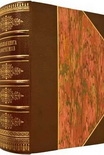Make: Electronics, Charles Platt [list of ebook readers .txt] 📗

- Author: Charles Platt
Book online «Make: Electronics, Charles Platt [list of ebook readers .txt] 📗». Author Charles Platt
Figure 4-4. Look for the chip family (74xx, in this case) with the correct generation (HC, in this case) embedded in the number. Make sure you buy the DIP version, not the surface-mount version. The manufacturer is unimportant.
Here’s your chip list:
555 Timer. STMicroelectronics SA555N, Fairchild NE555D, RadioShack TLC555, or similar. Do not get the “CMOS” version of this chip, or any fancy versions such as those of high precision. Buy the cheapest you can find. Quantity: 10. The chip in Figure 4-2 is a 555 timer.
Logic chips types 74HC00, 74HC02, 74HC04, 74HC08, 74HC32, and 74HC86. Actual part numbers could be M74HC00B1, M74HC02B1, M74HC04B1, and so on, by STMicroelectronics, or SN74HC00N, SN74HC02N, SN74HC04N, and so on, by Texas Instruments. Any other manufacturers are acceptable.
Remember, each part number should have “HC” in the middle of it, and you want the DIP or PDIP package, not surface-mount. Quantity of each: At least 4.
4026 Decade Counter (a chip that counts in tens). Texas Instruments CD4026BE or similar. Quantity: 4 (you’ll need 3, but because this is a CMOS chip sensitive to static electricity, you should have at least one in reserve). Any chip with “4026” in its part number should be OK.
74LS92 counter chip, 74LS06 open-collector inverter chip, and 74LS27 triple-input NOR chip. Quantity: 2 of each. Note the “LS” in these part numbers! There will be one experiment in which I want you to use the LS generation instead of the HC generation.
IC sockets
I suggest that you avoid soldering chips directly onto perforated board. If you damage them, they’re difficult to remove. Buy some DIP sockets, solder the sockets onto the board, and then plug the chips into the sockets. You can use the cheapest sockets you can find (you don’t need gold-plated contacts for our purposes). You will need 8-pin, 14-pin, and 16-pin DIP sockets, such as parts 276-1995, 276-1999, and 276-1998 from RadioShack. See Figure 4-5. Quantity of each: 5 minimum.
Figure 4-5. When you’re soldering a circuit onto perforated board, sockets eliminate the risk of overheating integrated circuit chips and reduce the risk of zapping them with static electricity, and enable easy replacement.
Low-power LEDs
The logic chips that you’ll be using are not designed to deliver significant power. You’ll need to add transistors to amplify their output if you want to drive bright LEDs or relays. Because adding transistors is a hassle, I suggest an alternative: Special low-power LEDs that will draw as little as 1mA, such as the Everlight model T-100 Low Current Red, part number HLMPK150. Figure 4-6 shows a size comparison with a regular 5mm LED. Quantity: 10 (at a minimum).
Figure 4-6. An HC series logic chip is rated to deliver only 4mA at each pin. This is inadequate to drive a typical 5 mm LED (right), which is rated for 20mA forward current. Miniature, low-current LEDs (left) will use as little as 1mA in series with a suitable resistor, and are ideal for test circuits in which you want to see the output with a minimum of hassle.
LED numeric displays
In at least one of our projects, you’ll want to illuminate some seven-segment LED numerals. You’ll need either three individual numerals, or one package containing three numerals, such as the Kingbright High Efficiency Red Diffused, part number BC56-11EWA, which will be specifically referred to in schematics in this book. If you buy a different seven-segment display, it must be an LED with a “common cathode.” (Don’t buy liquid-crystal LCD numerals; they require different electronics to drive them.) If you have a choice of power consumption, buy whichever product consumes the least current. See Figure 4-7.
Figure 4-7. Seven-segment displays are the simplest way to show a numeric output and can be driven directly by some CMOS chips. For finished projects, they are typically mounted behind transparent red acrylic plastic panels.
Latching relays
You’re going to need a 5-volt latching relay that has two coils, instead of one. The first coil flips the relay one way; the second coil flips it back. The relay consumes no additional power while remaining passively in each state. I suggest the Panasonic DS2E-SL2-DC5V relay. If you buy a different relay, it must be dual-coil latching to run off 5 volts DC, switching at least 1 amp, in a “2 form C” package, to fit your breadboard.
Potentiometers
You’ll need 5K, 10K, and 100K linear potentiometers (one of each). Also, a 10K trimmer potentiometer (which you may find described just as a “trimmer”). The manufacturer is unimportant.
Voltage regulators
Because many logic chips require precisely 5 volts DC, you need a voltage regulator to deliver this. The LM7805 does the job. Here again, the chip number will be preceded or followed with an abbreviation identifying the manufacturer and package style, as in the LM7805CT from Fairchild. Any manufacturer will do, but the package should look like the one in Figure 4-8, and if you have a choice, buy a regulator that can deliver at least 1 amp.
Figure 4-8. Many integrated circuit chips require a controlled power supply of 5 volts, which can be delivered by this regulator when you apply 7.5 to 9 volts to it. The lefthand pin is for positive input, the center pin is a common ground, and the righthand pin is the 5V output. For currents exceeding 250mA, you should bolt the regulator to a metal heat sink using the hole at the top.
Tactile switches
These are SPST pushbuttons (momentary switches), usually with four legs. Look for the ALPS part number SKHHAKA010 or any similar item that has pins to fit your breadboard or perforated board. See Figure 4-9.
Figure 4-9. A tactile switch delivers tactile feedback through your fingertip when





Comments (0)